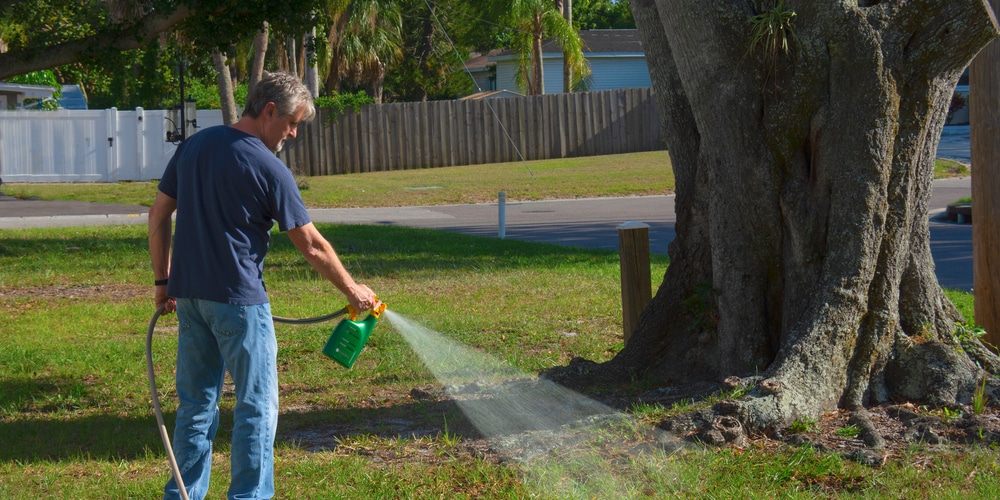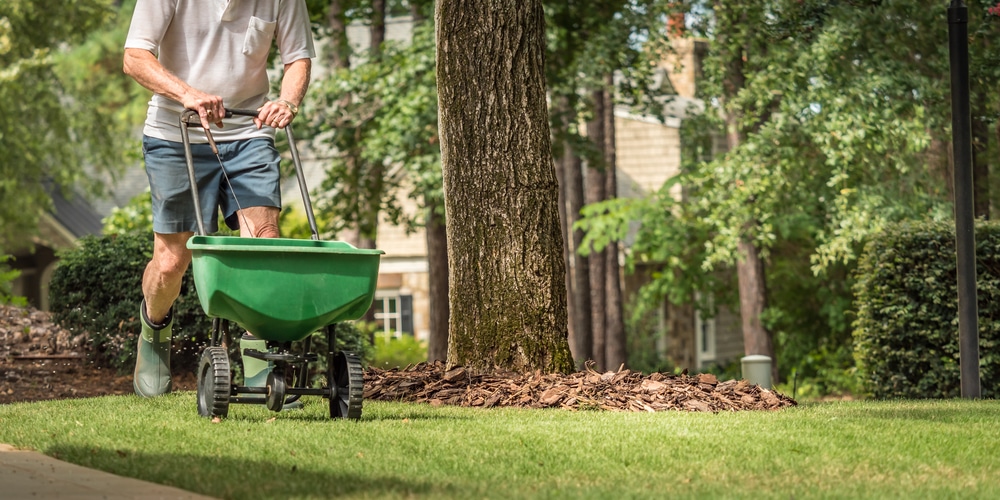Gardeners know that timing is everything; you should apply weed and feed in the proper seasons and take the weather conditions into account. Before applying weed and feed, there are other jobs you’ll need to do, such as aeration to help your grass absorb the solution. Let’s look at the best time of year to weed and feed.
Your lawn requires plenty of care and attention if it’s to thrive. Once your lawn has grown and established itself, you’ll need to give it water and fertilizer regularly. Your lawn will also need to be aerated and mowed at the correct times to keep it in good condition. You can combine fertilizing with weeding by applying a weed and feed solution to your lawn.
Applying Weed and Feed: Best Time and Practices
Here are some tips to help you get the most out of your weed and feed solution. It’s always a good idea to read the label on any products you’re using to ensure you’re applying the correct amount at the right time of year. Weed and feed should generally be applied at the beginning of spring as it will stop weed seeds from germinating. It can also be used on your lawn during the summer.
If you have very compact earth due to high traffic volumes, it’s a good idea to aerate your lawn before applying weed and feed. This will help break up the soil and allow the solution to be absorbed quickly. Make sure not to use too much weed and feed, as that can kill your grass. Here are the symptoms of too much weed and feed.
Avoid Treating Broadleaf Weeds During Extremely Dry Weather
Broad-leaf weeds that commonly grow in lawns include dandelions, clover, and creeping charlie. These are all invasive species that can easily spread across your lawn and should be treated regularly. Many of them look like grass, here’s how to spot them.
These weeds can be controlled by applying a spot treatment of herbicide explicitly designed for broad-leaf weeds or using a granular weed and feed product.
While it’s best to apply weed and feed in warm weather, scorching temperatures should be avoided as the chemicals can heat up and burn your grass. Apply a liquid or granular weed and feed solution early in the morning when there is dew on your lawn.
When to Apply Granular on Weed and Feed
Weed and feed requires some moisture for it to soak into your lawn, and wet-dewy conditions are perfect if you’re using granules. If you were to put weed and feed granules on dry grass, you’re wasting the chemicals as they will evaporate rather than soak into the soil.
If you want to apply weed and feed granules on a hot summer’s day, it’s best to water your lawn before sprinkling the solution as this will help the chemicals to be absorbed by the soil.
When to Apply Spray Weed and Feed
Liquid weed and feed can be sprayed on your lawn every two or three months from the early spring until fall. Liquid solutions are best applied when the weather is warm, as the temperature will mean that the weeds will absorb the chemicals.
Apply Pre-emergent Herbicides in the Spring
Many weed and feed products contain pre-emergent herbicides, which should be applied to your lawn in the spring before weed seeds have a chance to germinate. These are particularly useful for controlling weeds such as crabgrass.
Many herbicides are ineffective once the weeds have germinated and seedlings have started to grow. Make sure you apply pre-emergent before the weeds begin to grow. Crabgrass is a notoriously invasive weed that’s hard to get rid of after it germinated.
Bottom Line: Start in Spring and Keep Going
When it comes to gardening, timing is essential. The best time of year to apply weed and feed is spring and summer. You can apply weed and feed regularly throughout both seasons. Start your applications in the early spring before weed seeds have had a chance to germinate.
It’s also a good idea to consider the weather conditions before applying weed and feed. Don’t put granules on your lawn if the weather is hot and dry unless you water your yard first. Liquid weed and feed can be applied in warm weather.
Your lawn also needs to be regularly aerated and watered (but not overwatered) to allow the grass to have access to adequate nutrition. If you have very compact earth due to high volumes of traffic, it’s a good idea to aerate your lawn using a rake before applying weed and feed. This will help break up the soil and allow the solution to be absorbed easily.

